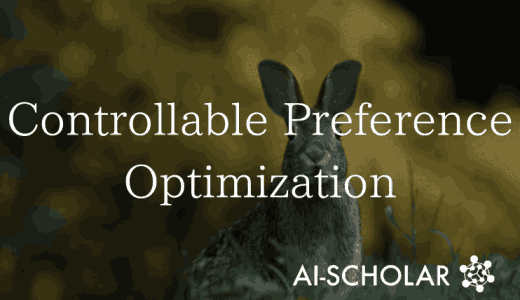
Graphix-T5: Database Operations In Natural Language
3 main points
✔️ Graphix-T5 is a text-to-SQL conversion technology.
✔️ The performance of the conversion is improved by incorporating a special graph-aware layer into the text-to-SQL conversion task.
✔️ We have demonstrated the effectiveness of GRAPHIX-T5 in cross-domain text-to-SQL conversions.
Graphix-T5: Mixing Pre-Trained Transformers with Graph-Aware Layers for Text-to-SQL Parsing
written by Jinyang Li, Binyuan Hui, Reynold Cheng, Bowen Qin, Chenhao Ma, Nan Huo, Fei Huang, Wenyu Du, Luo Si, Yongbin Li
(Submitted on 18 Jan 2023)
Comments: Accepted to AAAI 2023 main conference (oral)
Subjects: Computation and Language (cs.CL); Databases (cs.DB)
code:

The images used in this article are from the paper, the introductory slides, or were created based on them.
Summary
SQL (Structured Query Language) is a standard query (request for processing) language used in database management systems (DBMS). For example, it is used to retrieve data from a table in a database that matches certain criteria or to insert new data.
T5 (Text-To-Text Transfer Transformer), on the other hand, is a type of deep learning model for natural language processing; T5 is designed to be applicable to tasks where input and output are represented by text. Specifically, given an input sentence, it is trained to produce an appropriate output sentence for it; T5 is typically pre-trained on large data sets and then fine-tuned for a specific task.
Graphix-T5 combines these two concepts. In other words, T5 is used for the natural language to SQL conversion task, and a special graph-aware layer is incorporated into it to improve the performance of the conversion. This allows us to generate more accurate and complex SQL statements when converting natural language questions into database queries.
Introduction
Relational databases are used as tools for important decision-making in a variety of fields, such as health, sports, and entertainment, but their operation requires a specific programming language, SQL. However, SQL is difficult to master and requires specialized knowledge. For this reason, tools that convert from natural language to SQL are attracting attention. The goal of this research is to improve the way complex information is processed so that such tools can be used in various fields. This study explores how to achieve this goal using a specific model called T5.

The diagram above illustrates how difficult it can be to convert text to SQL. For example, it would be ideal to associate the word "woman" with a column in a particular table, but without the rules and data to do so, it is difficult for the model to understand it correctly. However, this problem can be solved a bit by a multi-step inference path.
GRAPHIX-T5
GRAPHIX-T5 first uses a machine learning technique called transformer blocking to understand the meaning of questions written in human language. This technique is designed to understand the context and meaning of words and process questions more accurately.
Next, to understand the structure of the database, we use a technique called a graph attention network. This technique represents the tables and relationships in the database as a graph to better understand the relationship between the questions and the database. In other words, GRAPHIX-T5 understands the meaning of the questions and the structure of the database in their own unique ways, and uses them to integrate them to obtain better results.

This illustration shows the problem when the words in a question do not exactly match the entries in the database. In case (a), a direct connection between all words and database entries is proposed. In case (b), a more efficient way of relating words to database entries is proposed by adding new connection points.
Mounting
Dataset and Setup
This part of the report describes the data sets and settings for the text-to-SQL conversion task. Specifically, four different test environments and two training settings are used. Each environment covers a different aspect and is designed to approximate a real-world scenario. Also used for evaluation are exact match (the percentage of SQL generated that exactly matches the correct answer) and execution accuracy (a measure of whether the predicted SQL is valid or not), which play an important role in assessing the performance of the model. As for the implementation, it is set up using a specific library, with specific parameters and training settings. Finally, to validate the effectiveness of GRAPHIX-T5, experiments will be performed on several versions of the model and comparisons with other major baseline models will be made.
Performance
We compare the performance of GRAPHIX-T5 with other models in a test called SPIDER. SPIDER is a benchmark test to evaluate text-to-SQL conversion tasks. The test evaluates the ability to generate SQL queries for a given natural language question. Specifically, it evaluates whether a given question generates the correct database query; SPIDER is designed to scale the difficulty of database query generation to mimic different levels of complexity and realistic scenarios. Such benchmark tests are widely used to objectively evaluate the performance of natural language processing models; GRAPHIX-T5, with its constrained decoding module called PICARD, GRAPHIX-T5-3B, produced the best results.

The GRAPHIX-T5 with a constrained decoding module called PICARD, the GRAPHIX-T5-3B, gives the best results. GRAPHIX-T5 also outperforms the other models by showing robustness in more difficult settings.

The GRAPHIX-T5 clearly demonstrates its strengths by outperforming the regular T5 even with smaller amounts of data.
Ablation studies are examining the effects of GRAPHIX-T5 features. The goal here is to understand how specific features of GRAPHIX-T5 affect performance. Furthermore, GRAPHIX-T5 outperforms other models and its usefulness is evident.
Finally, the case studies show that GRAPHIX-T5 is able to generate accurate SQL even in difficult scenarios, clearly outperforming the vanilla T5.
 The SPIDER test compared the performance of the GRAPHIX-T5 and GNN-T5 models. The results revealed that GNN-T5 has a very low performance due to a serious problem: catastrophic forgetting.
The SPIDER test compared the performance of the GRAPHIX-T5 and GNN-T5 models. The results revealed that GNN-T5 has a very low performance due to a serious problem: catastrophic forgetting.
Catastrophic forgetting is a phenomenon in which a machine learning model rapidly forgets the information it has learned during training. This means that the model can no longer make use of most of what it learned previously when training new data. Specifically, in the case of GNN-T5, the information learned by the model in the first few thousand steps rapidly disappears, leaving little previous knowledge available for subsequent training. This can dramatically degrade model performance.
Conclusion
The basic principle of the cross-domain text-to-SQL conversion program is to create SQL by learning information about the question and the database. First, we build the part that learns the information about the question and the database, and then we use that information to predict the SQL. Recent research has proposed graph-based methods to model the relationship between the database and the questions and to improve the prediction of SQL. These methods are effective with models that convert text to SQL (e.g., T5), and there are attempts to improve performance using other methods; GRAPHIX-T5 can address SQL generation in more challenging scenarios by adding graph learning. In this paper, we demonstrate the effectiveness of GRAPHIX-T5 in cross-domain text-to-SQL conversion while improving T5's capabilities.
Based on the success of GRAPHIX-T5, as a future perspective, in cross-domain text-to-SQL conversion, it is important to improve model scalability and flexibility, ensure diversity of training data, improve usability and convenience, and properly handle errors and uncertainty, and these issues By addressing these issues, a more practical and effective text-to-SQL conversion is expected to be achieved.
Categories related to this article




![[IRCoder] Intermedia](https://aisholar.s3.ap-northeast-1.amazonaws.com/media/May2024/ircoder-520x300.png)



